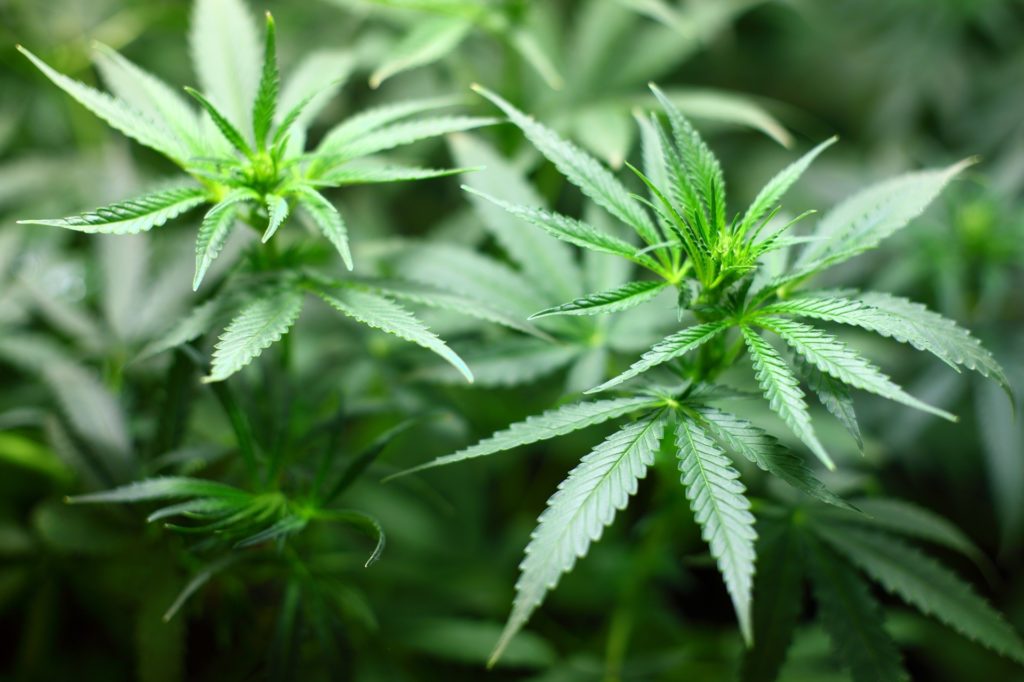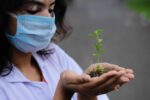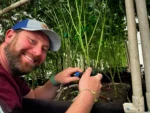Proper seedling care is a foundational aspect of cannabis growing. The seedling stage is the most vulnerable stage in the lifecycle of the cannabis plant- at no other point in the development of your cannabis plant is proper light care more important. In this blog we will discuss the importance of the seedling stage, the best seedling care techniques to optimize your plants’ growth, and the accompanying necessary light cycle.
Understanding the Seedling Stage

“Cannabis seedling” is the name given to small cannabis plants for the first couple of weeks after germination. The cannabis seedling stage can be an apprehensive time for the less experienced grower. During the seedling stage the plant is small, fragile and at its most vulnerable. During this time using the correct soil type, watering cycle, container, and light cycle is incredibly important; making a mistake with any of these can cause poor growth or kill the plant altogether. Below we will look at each of these factors- and how they impact your seedlings.
Picking Your Soil
What your seedling grows in, and where it harvests nutrients and water from, is paramount to its development. It’s recommended that seedlings be grown in a well aerated, light, and slightly acidic soil with a PH of 6-6.5. Seedlings are extremely sensitive to nutrients at this time, and water uptake is directly correlated with nutrient delivery, so it is best to avoid using any clay-based soils as these will retain water and affect drainage. Also, it is important that you wait to add any additional nutrients and that you do not use nutrient-rich soil until the plants develop further- otherwise, you may shock and even kill them.
Container and Potting Considerations
When you’ve gone past the immature seedling stage, it will be time to choose a container or pot for your plants. At this stage, seedling roots absorb much less water than their mature counterparts. Using too large of a container will lead to over-watering, as growers often water as much as the container can hold. Too small of a container and your plant will stagnate and have poor root development. To avoid this,
you should begin with a small container about the size of a 12 oz cup. It’s important to have drainage at this stage to avoid over-watering. Over watering can quite quickly lead to the end of your plant. But if you use the correct soil, it’s as easy as popping a few holes in the bottom of the container, allowing water to drain out (though we always recommend containers with built-in drainage). Once your plant has begun to develop stronger roots you can gradually move up in container size relative to the stage your plant is in.
Watering
Seedlings are developing roots that are in search of water and nutrients. Naturally, these roots are at their most sensitive during this stage, and this makes watering extremely important. Over-watering and under-watering are both equally detrimental, but they can be avoided quite easily. Seedlings should be kept moist but not wet, and they should not be allowed to dry out completely. This balance can be easily maintained by using a water spray bottle. The plant should be sprayed until the soil is moist daily as needed.
Types of Grow Lights
Seedlings are sensitive to light, which makes your selection of a light source- and the type of light source- very important.. Typically, grow lights come in three flavors: HID (High Intensity Discharge lamps), CFLs (Compact Fluorescent Lights), and LED (Light Emitting Diode lamps) For the meticulous grower, different stages in the cannabis plant life cycle call for different lamps- from HID in the vegetative state to CFL in the seedling stage, each type of lamp has its pluses and drawbacks.
Grow Light Temperature
The ambient temperature should remain near 73 degrees, and you can check this using a temperature monitor. High temperatures will stress your seedlings and stunt their growth, and at such an early stage this can prove fatal. That means keeping a close eye on the temperatures thrown off by your grow lights. If your seedlings are experiencing temperatures that are too high, their leaves will start to curl upwards.
You can solve this problem by lowering the heat your plants are exposed to by moving them further away or adjusting your grow light. These symptoms are more likely to present when your marijuana plants are not receiving enough water.
Cold temperatures can cool the plant’s cells, affecting its ability to transport and use water, oxygen, and nutrients. This will result in stunted growth and eventually death if not dealt with quickly. Slow growth and wilting foliage are some signs that the temperature is too low; adjusting distance to your grow lights and maintaining a regular room temperature can help fix this issue.
Grow Light Pros and Cons
Seedlings can burn under strong HID and LED bulbs. Just like adult plants, seedlings will develop burnt, crinkled leaves when experiencing light stress. Conversely, seedlings that don’t get enough light can grow tall, searching for light, and then fall over on themselves (improperly placed CFLs can cause this issue in particular- and they’re not great for flowering stage plants, either).
CFLs do have some advantages during the seedling stage: they can be placed close to plants due to their low heat, and they are highly efficient, providing lower operating costs as they use less wattage to deliver the same amount of lumen as other bulbs.
While many growers settle on CLF lighting for seedlings and move on to HID or LED lighting for the vegetative state, BIOS’s revolutionary Icarus light product line- which relies on energy-efficient and optimized broad-spectrum white lighting—along with industry-leading Photosynthetically Active Radiation (PAR) photon efficacy—means you can pick one LED lighting set up for your plants and stick with it, saving you countless man hours in switching over lights.
Light Cycles for Optimal Seedling Growth
For best overall results, BIOS recommends that you grow your seedlings under an 18/6 light cycle using Icarus LED lamps, set 24-36 inches from the leaf canopy, and under a blue light spectrum for their first 10-14 days. 18/6 simply means 18 hours of light and 6 hours of darkness. While you can play with this formula- some advocate for forcing growth with a 24/0 cycle- you make tradeoffs in terms of the product quality, electricity costs, and the potential for light burn, so proceed with caution.
LEDs, while presenting a high initial purchase cost, are by far the most adjustable, adaptable light- and the most economical. They can be adjusted to produce different light spectrums, allowing you, with certain lights, to keep the lighting set up the same from seedling to harvest with minor adjustments. Furthermore, their energy costs over time are significantly lower than traditional CFL and HID lights.
When it comes to commercial growing, efficiency matters more- making adjustable LEDs like the BIOS Icarus product line especially valuable, given their combination of adjustability with powerful engineering designed to give you access to top-of-the-line PAR efficacy and spectrum efficiency.
FAQs
- What light spectrum should I be exposing my seedlings to? For best overall results, BIOS recommends that you grow your seedlings under a blue light spectrum for their first 10-14 days.
- What type of light should I grow my seedlings under? While historically CFLs have been most popular for seedling growth, recent advancements in LED lighting mean you can rely on adjustable broad-spectrum LEDs, like those of the BIOS Icarus product line, for predictable and effective results.
- What light cycle is best for cannabis seedlings? BIOS recommends you keep your cannabis seedlings on an 18/6 light cycle using Icarus LED lamps, set 24-36 inches from the leaf canopy.
- What is PAR? PAR stands for Photosynthetically Active Radiation (PAR) photon efficacy. It refers to the wavelengths of light which drive photosynthesis.
- What are HID, LED, and CFL bulbs? HID (High Intensity Discharge lamps), CFLs (Compact Fluorescent Lights), and LED (Light Emitting Diode lamps).




